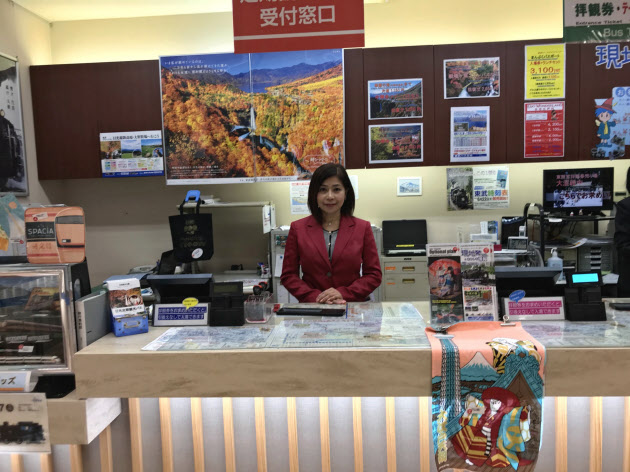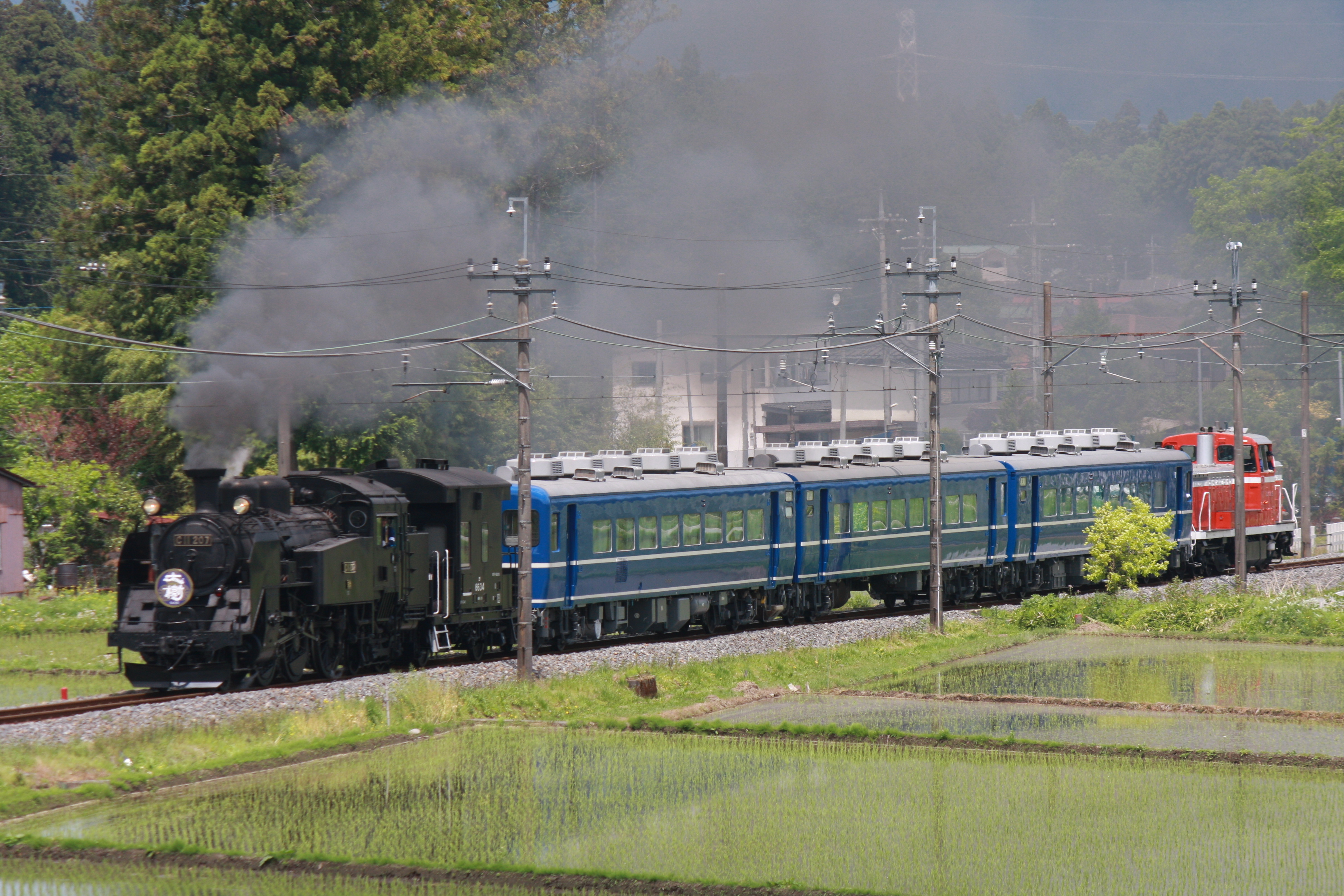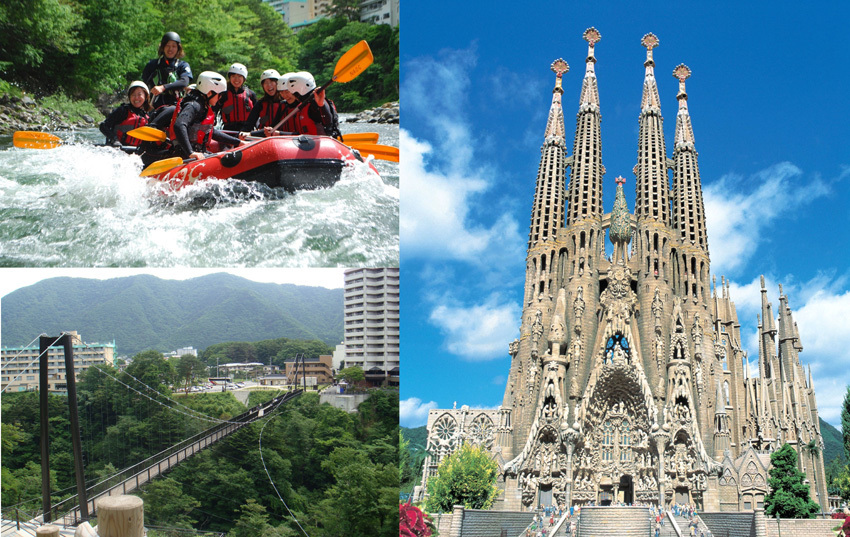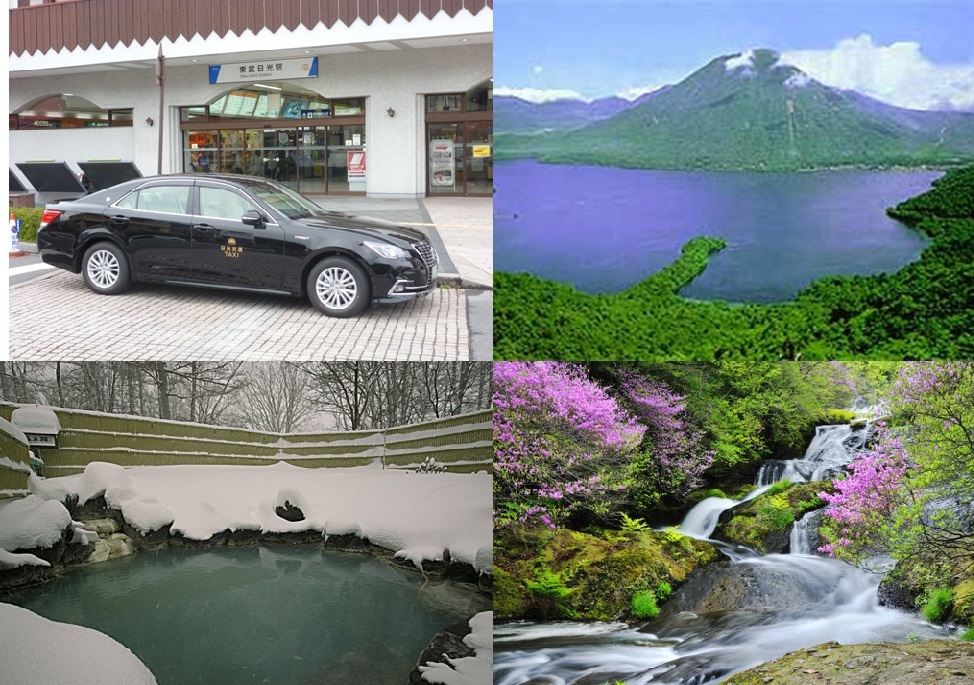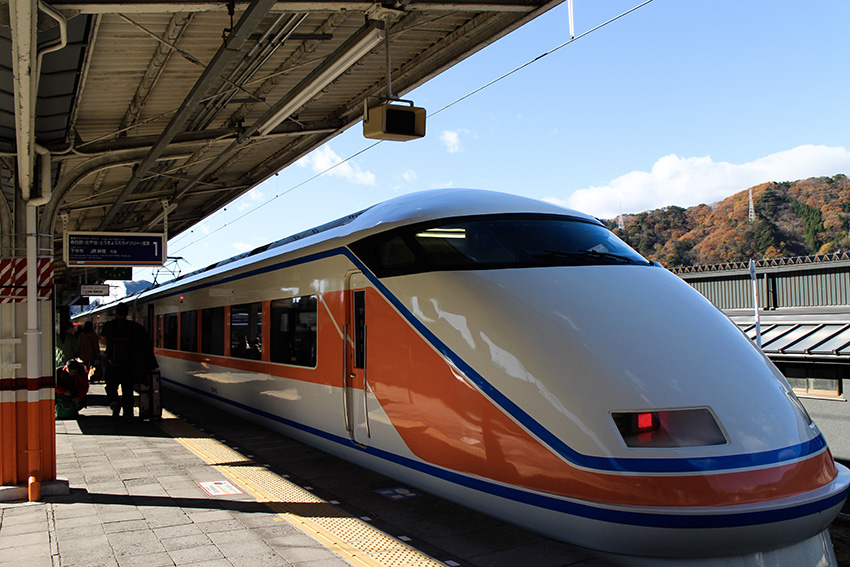
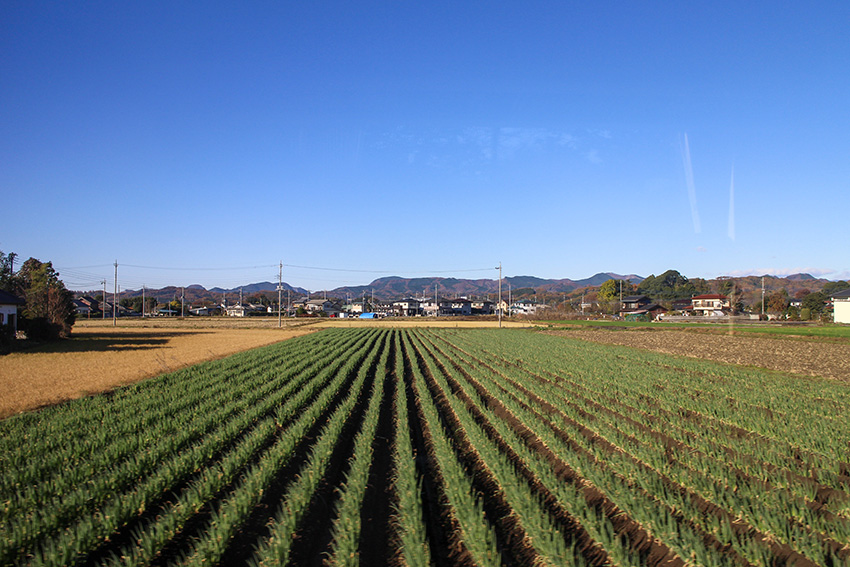
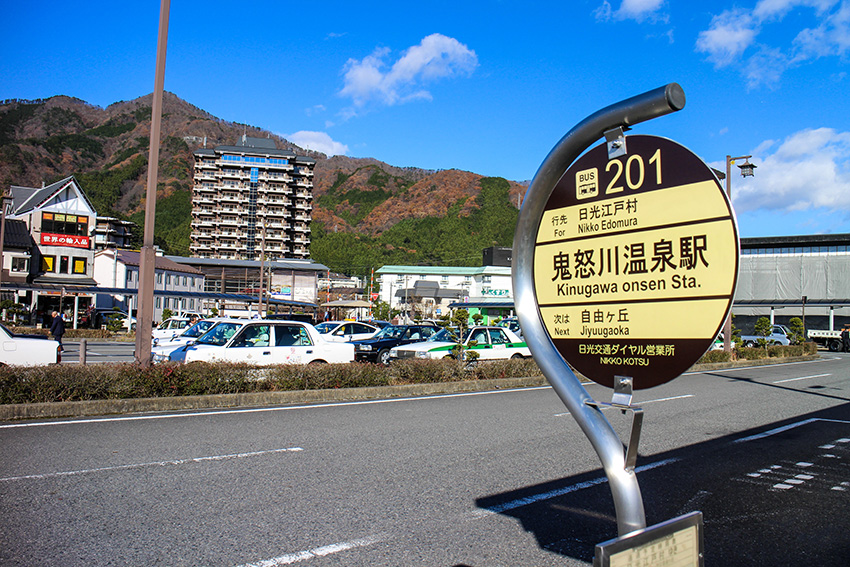
The train zooming past rice fields brings us ever closer to Kinugawa Onsen area, and even though we’ve travelled only 2 hours from Tokyo, the tranquility convinces us we've arrived somewhere far away. It’s December and the air is crisp, the sky is blue, and the autumn leaves are losing their last colour.
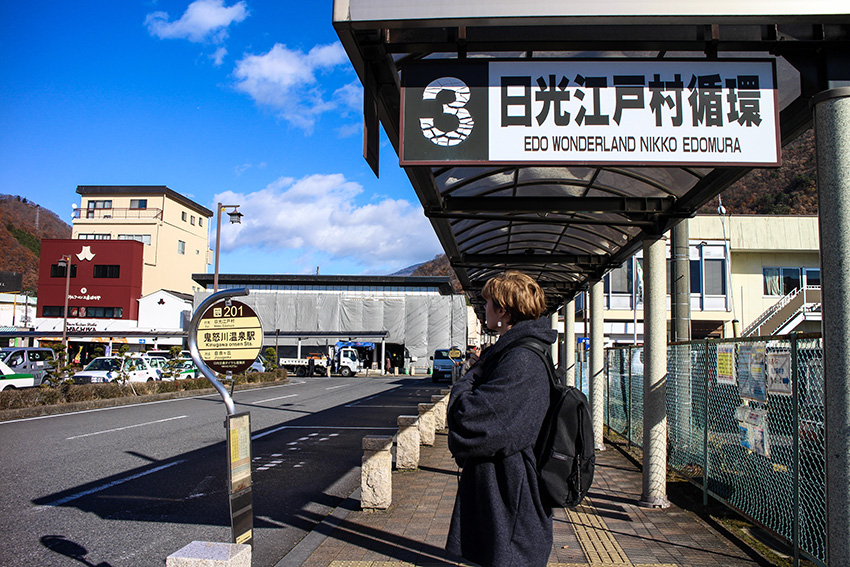
We travel with the NIKKO PASS all area, that we bought at the TOBU Tourist Information Center ASAKUSA, and it helps us hop easily between spots. Having the NIKKO PASS grants us unlimited rides on the buses in designated areas, and rides on the Tobu trains during our trip. We just show the pass to the train station staff or the bus driver and go through. However we needed to pay an extra fee for the limited express train. Although our final destination later in the day is Yunishigawa onsen, a bit further and higher in the mountains, we get off at Kinugawaonsen station with a purpose. We hop on the bus heading to Edo Wonderland, just outside the station, bus stop 3. We just show the NIKKO PASS, which also grants a 10% discount on Edo Wonderland tickets! And Edo Wonderland grants us a slide right into the past!
EDO WONDERLAND – A Veritable Time Machine
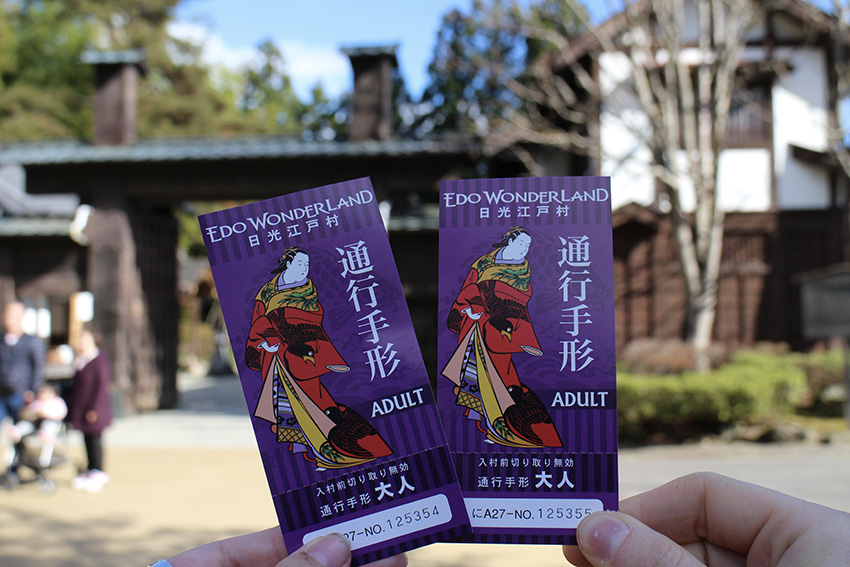
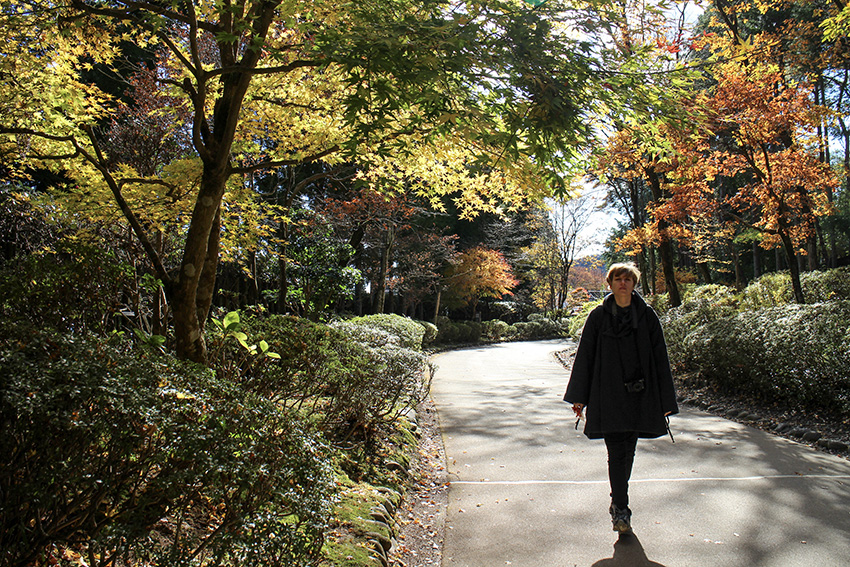
Edo Wonderland is a theme park that convinced us we were back in Edo, old Tokyo (1603 – 1868). No one is breaking character here – everyone starting with the ticket sellers is dressed like an Edo resident and speaks an Edo dialect. We entered the gates and ventured inside, following a narrow scenic path as if weaving through the backstage to end up on stage.
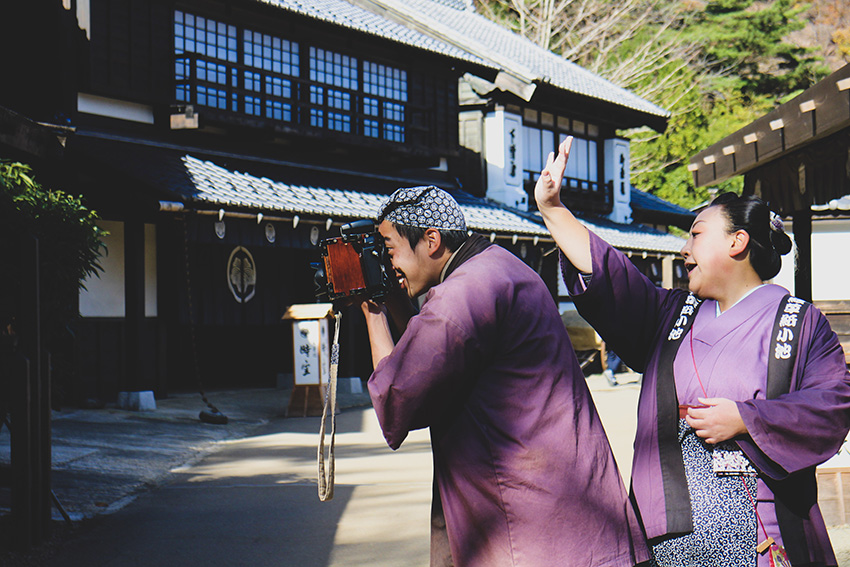
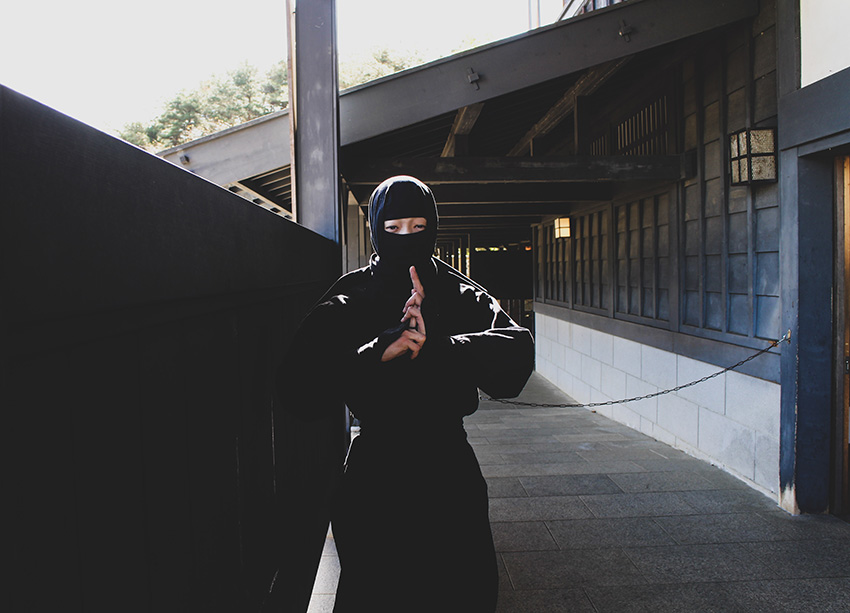
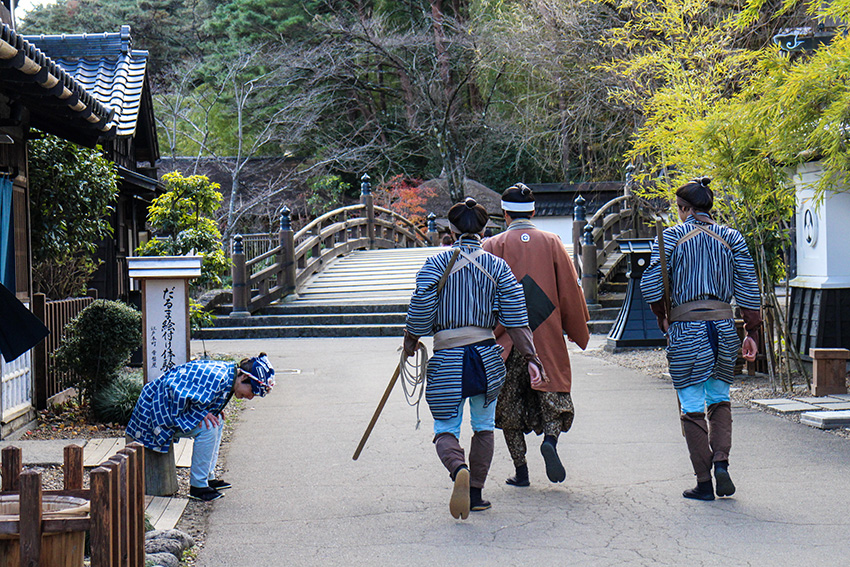
The ‘stage’ did not disappoint! We saw an oiran show in the kabuki theater, the same beautiful oiran courtesan that is the star of a parade through Edo Wonderland. We then admired the swift movements of ninjas in the darkness, choreographed and performed to perfection with no chance of a wrong move!
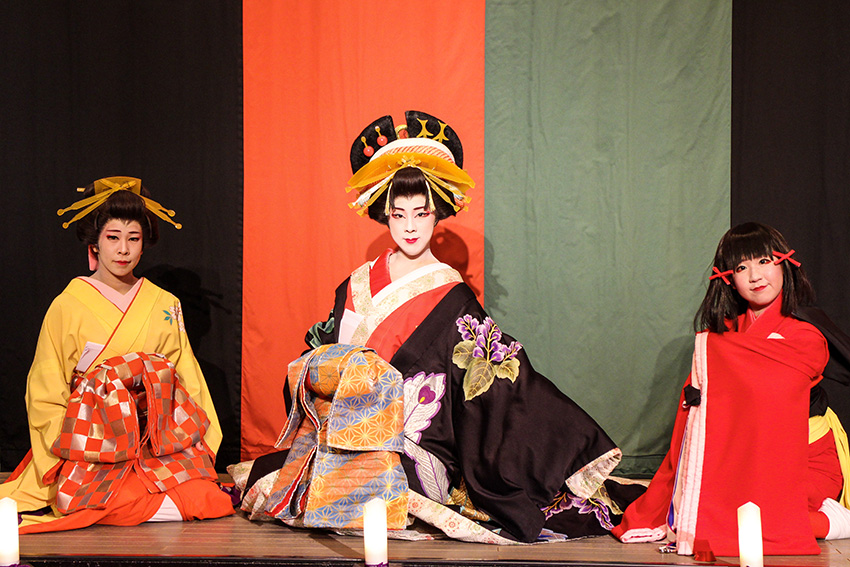
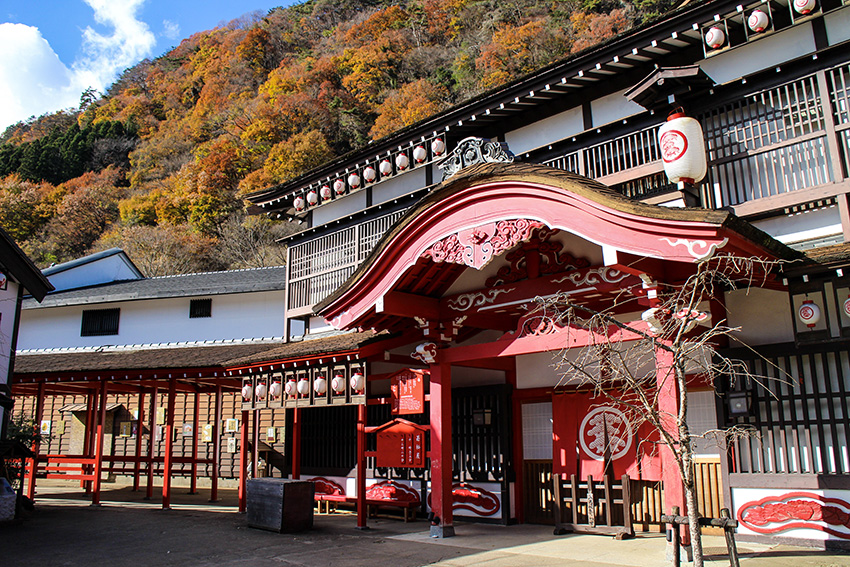
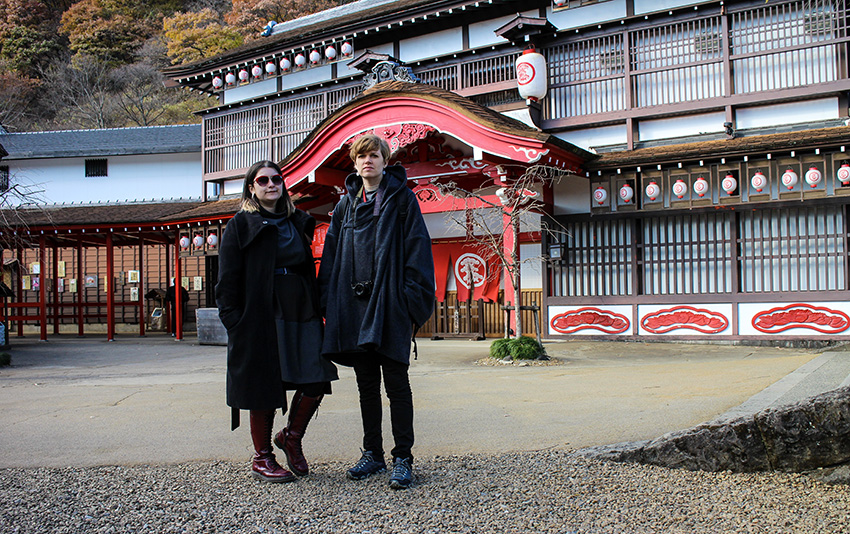
We were thrilled to find out we were not just extras standing around and watching in this Wonderland! You can try throwing shuriken (ninja star), ninja your way around secret passages, test your balance in the slanted ninja house or challenge a ninja maze! Even the oiran show invited people on stage!
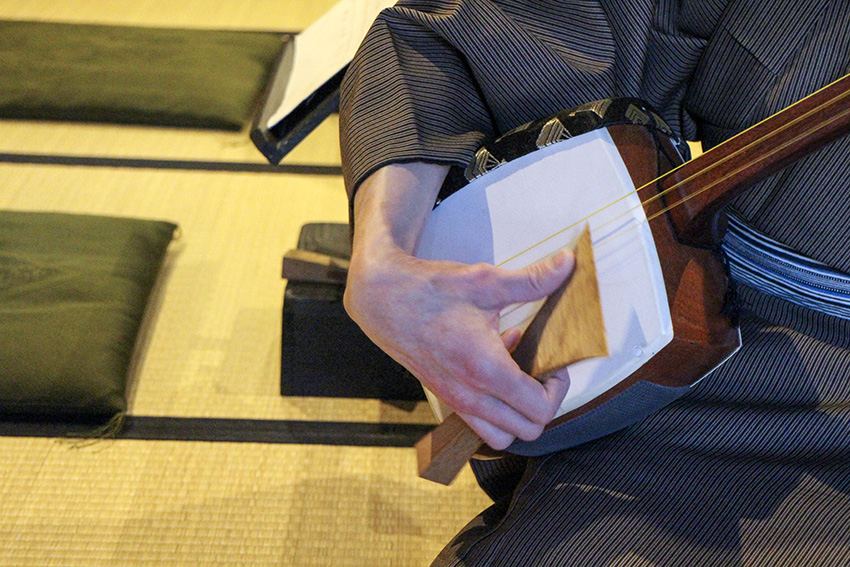
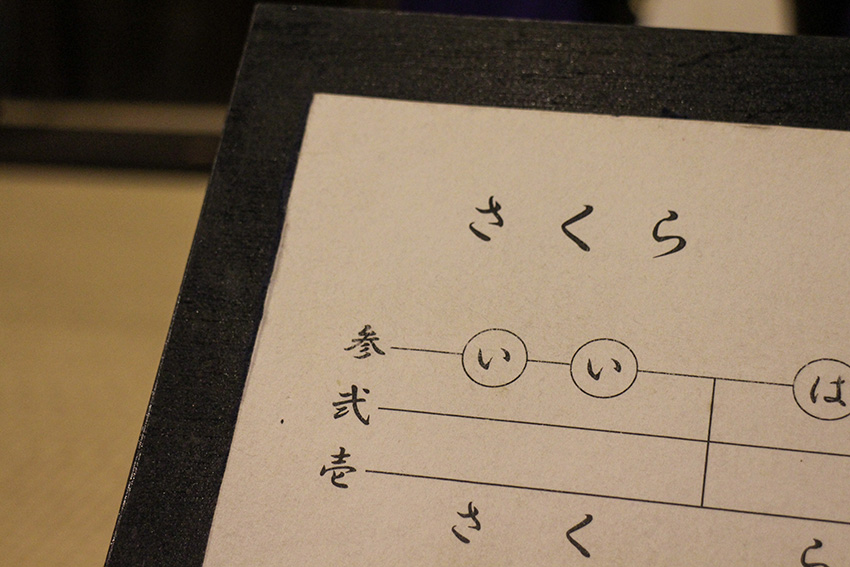
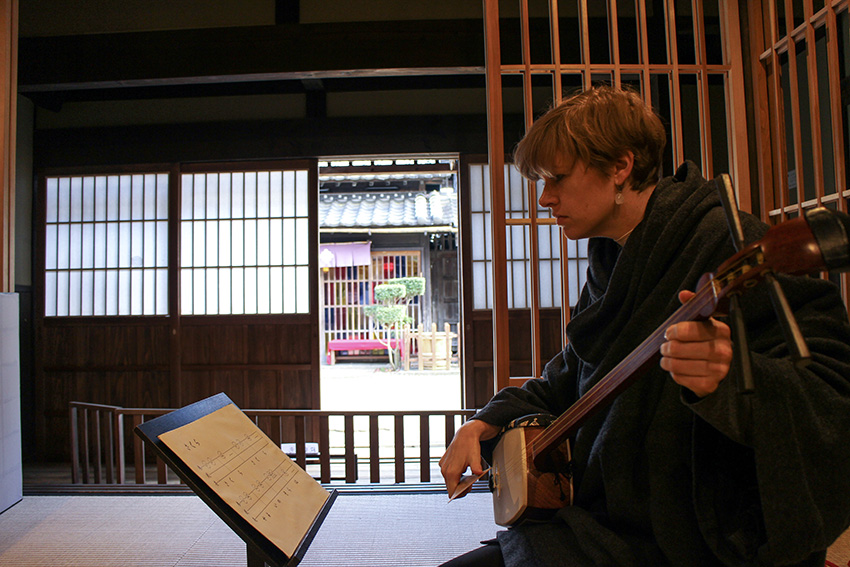
Aside from ninjas lurking and Edo Shinsengumi police patrolling the streets, the samurai also await in their area. They can teach you to wield a katana or shoot arrows on horseback. The sheer number of activities is so big, we had trouble deciding what to do! But we finally opted for a more artistic route and tried playing shamisen. The master was kind to absolute beginners like us, patiently teaching us to pluck the simple traditional Japanese song “Sakura, Sakura” on the 3-stringed instrument. For art lovers, there are also workshops like indigo dyeing (aizome), making ukiyo-e woodblock prints, painting daruma dolls and so on.
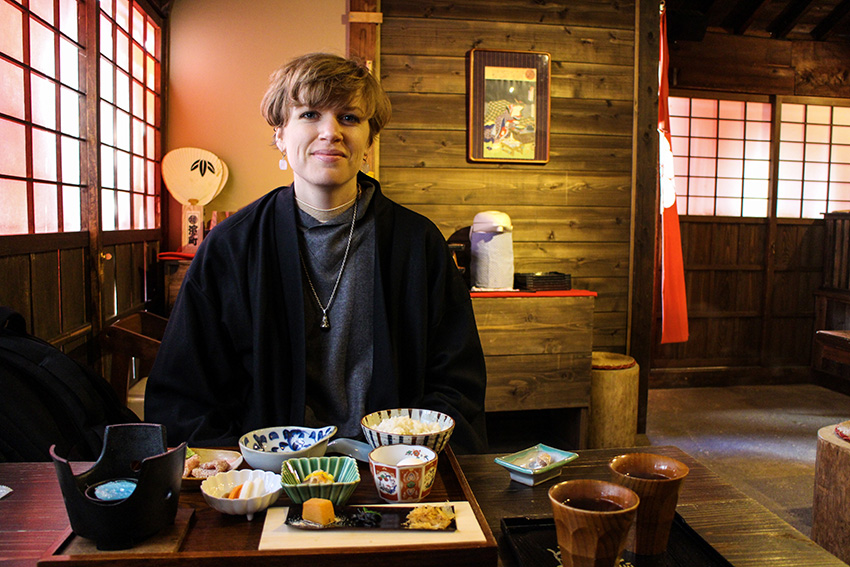
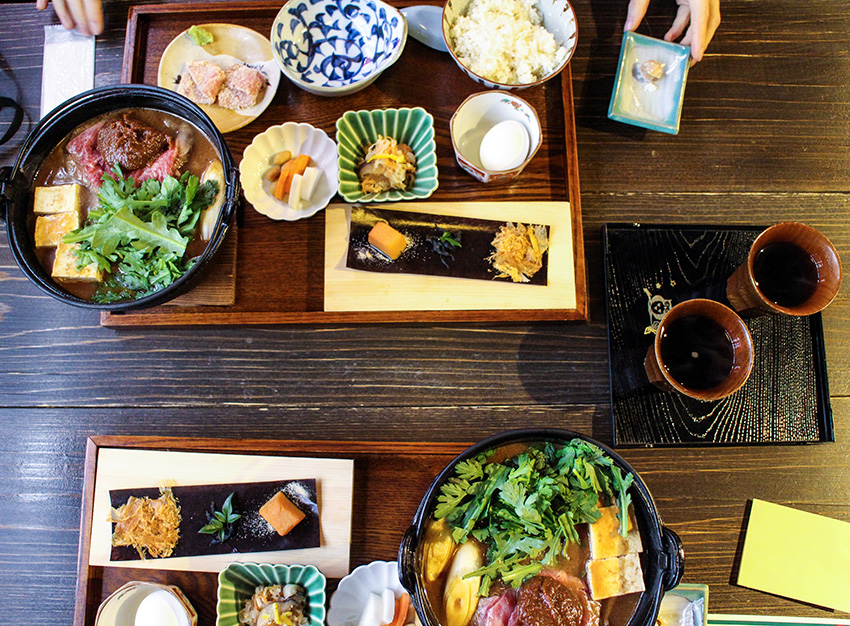
We couldn’t leave without tasting Edo Wonderland’s limited time Autumn Edo Cuisine. The “Bakumatsu No Gyunabe Zen” is a dish created by culinary researchers and tuned to Edo flavours, while celebrating autumn’s bounty. The beef stewed in Edo miso broth warmed us inside out, with fun sides like roasted gingko nut, raw tuna with okara, Edo-style pickles – the lunch itself was an entertainment.
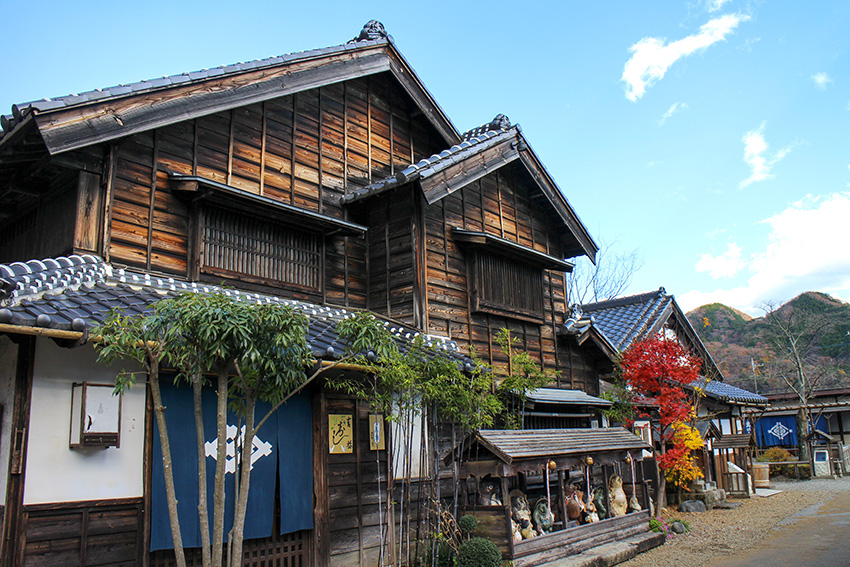
It was hard to say goodbye to Edo Wonderland, but after meeting its resident mascot Nyan-mage on our way out, we knew there is another treat waiting for us higher in the mountains.
Hana to Hana, Yunishigawa Onsen – Melting Reality Away
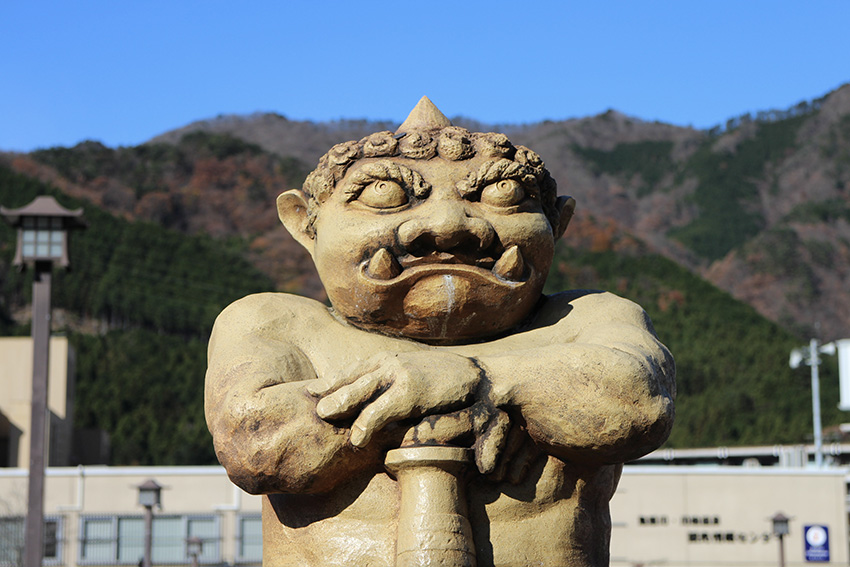
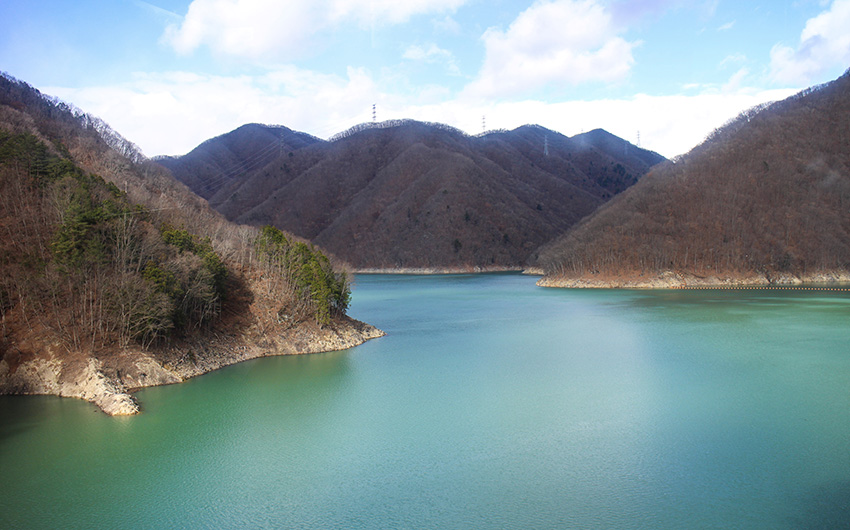
After a short bus ride to Kinugawaonsen station, we said hello to the little demon statue in front of the station and jumped on the train to Yunishigawa onsen station. The Nikko pass covers most of the trip, with an additional 520 yen paid when you exit Yunishigawa onsen station. Right in front of it is the bus taking you all the way to the ryokan area, and it dropped us in front of “Hana to Hana”.
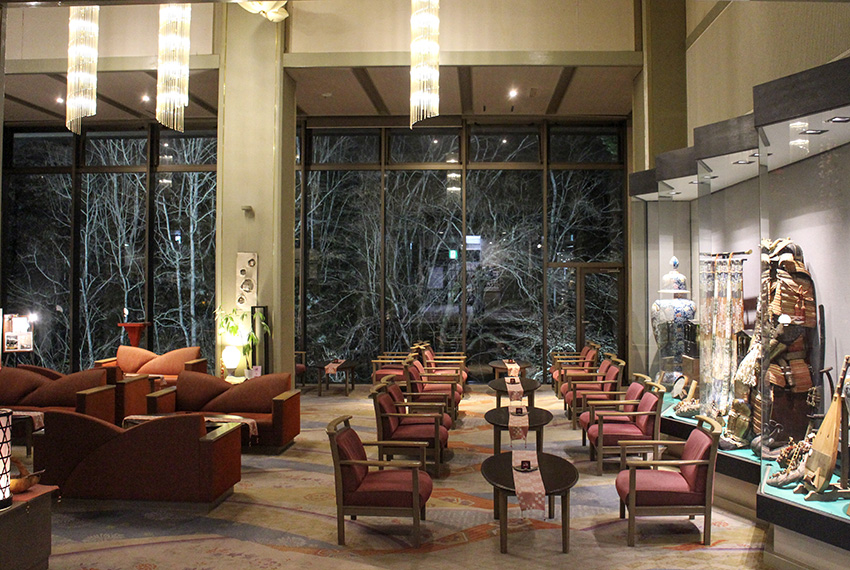
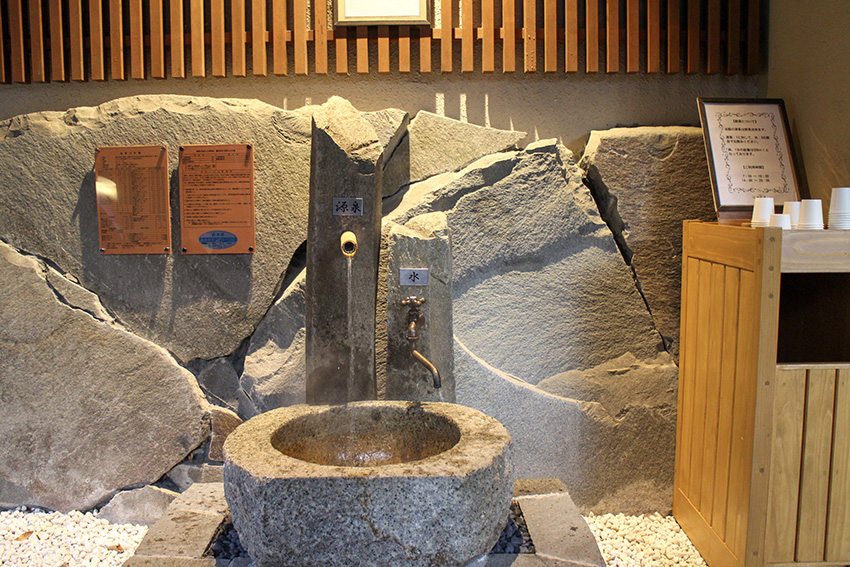
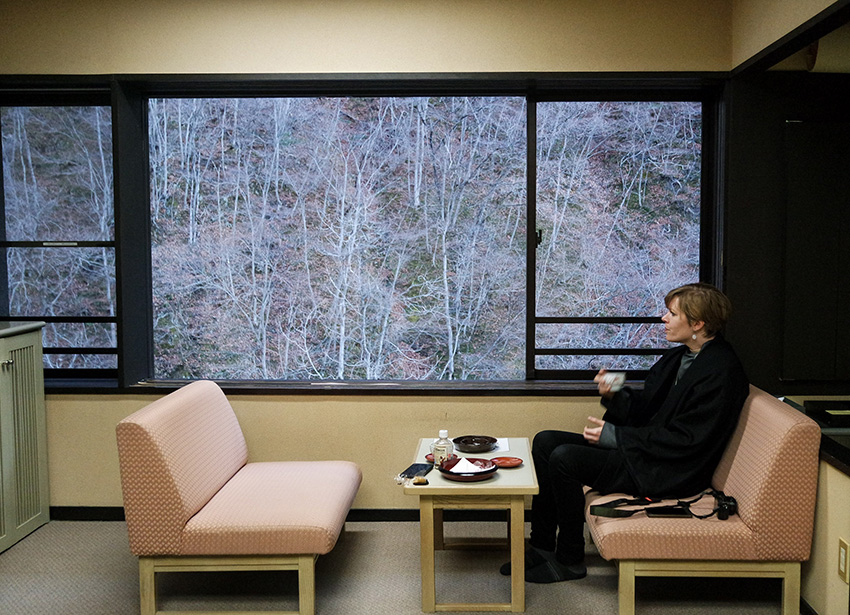
The hotel is nestled in the mountains, drawing natural hot spring waters for its many baths, boasting their healing and beautifying effects. It is one of the rare places in Yunishigawa onsen with drinkable onsen water! You can try it at the entrance – diluted with a bit of cold water, it almost tastes like liquid egg! Everything is organized around the hotel’s four wings, each one having the best views for each season. Right at the heels of autumn and start of winter, our room faced the valley and the first thing we did was sip warm green tea by the window.
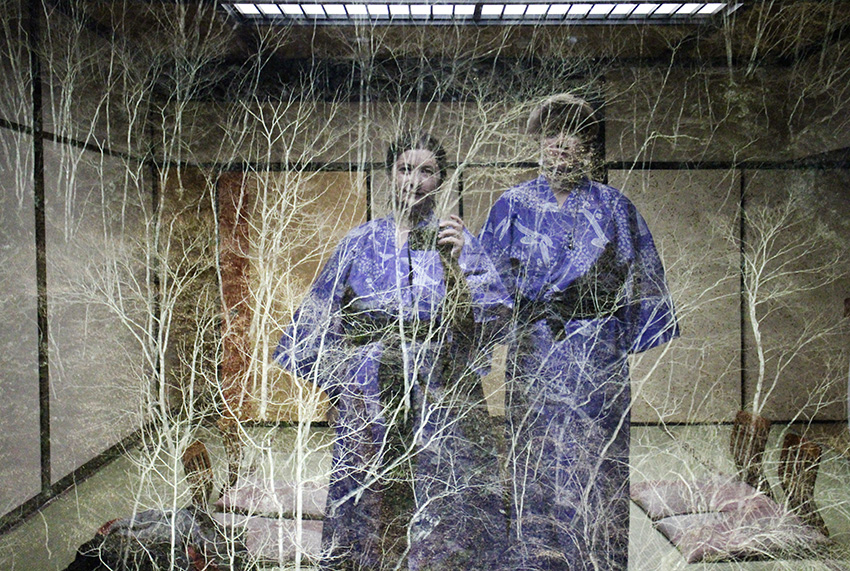
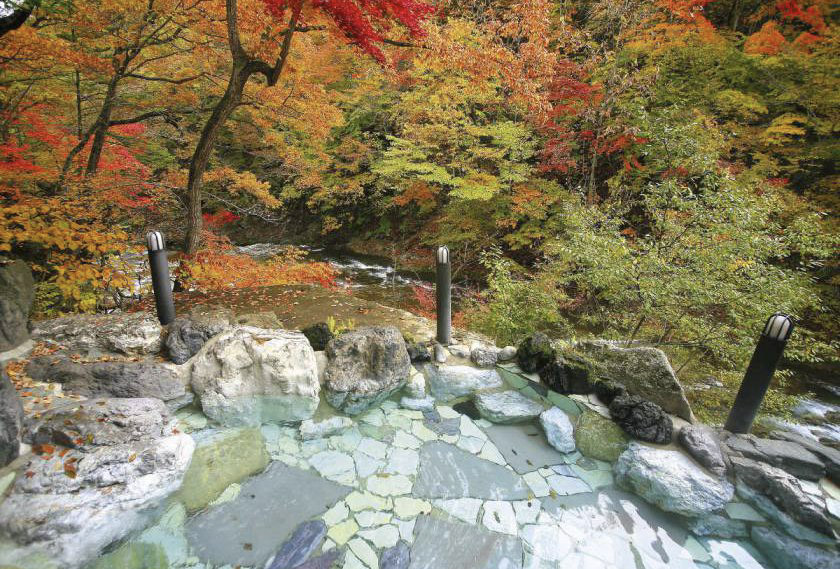
The second thing we did was slip into the lovely lilac yukatas and wooden zori shoes, the staff having provided us with the right size. And click-clack, we made our way to the hot springs that this area has been blessed with. Washing off exhaustion in the hot springs is how most Japanese people want to spend the weekend.
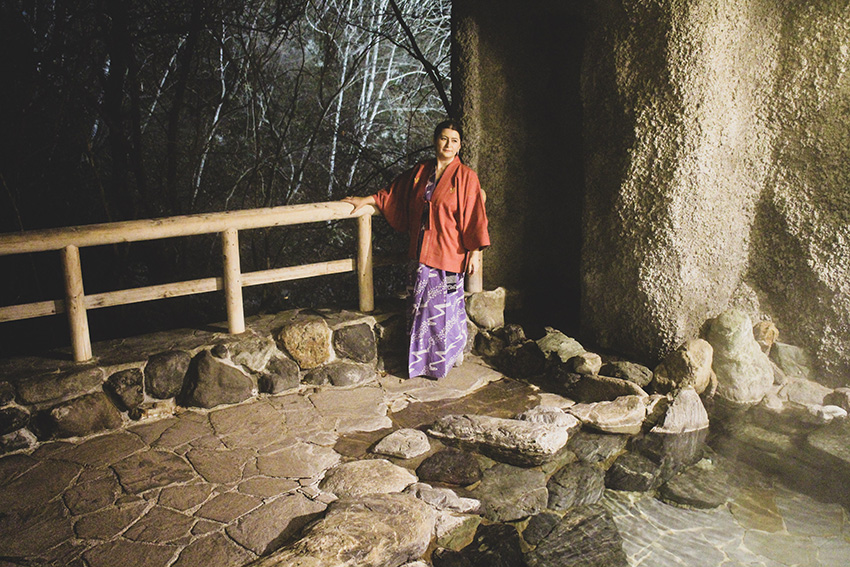
Soaking in the rotenburo bath outside, gazing at the crescent moon and catching the last red Momiji leaves falling in the water, there is no other place I would rather be. Except for trying out Hana to Hana’s other baths!
For a special treat, we reserved one hour in the private onsen (called kashikiri onsen). This is a lifesaver for those who are shy, have tattoos, or for any reason just want to be alone. And we enjoyed every moment of that calmness, every breath like white mist in the air, water trickling down the stones, the river warbling down below...
The onsen experience is essential Japanese culture, inextricably linked to travel. Of course, it comes with a set of rules and manners. Step 1: you take ALL your clothes off. Step 2: you wash yourself THOROUGHLY – as we enter the hot springs completely clean. Step 3: soak, relax and enjoy! In the water: no soaps or shampoos, no towels, no splashing, long hair should be in a bun. These are some of the basic rules of bathing in any hot spring or sento in Japan.
Irori Cooking – Tochigi’s Tastiest Sizzling in front of You
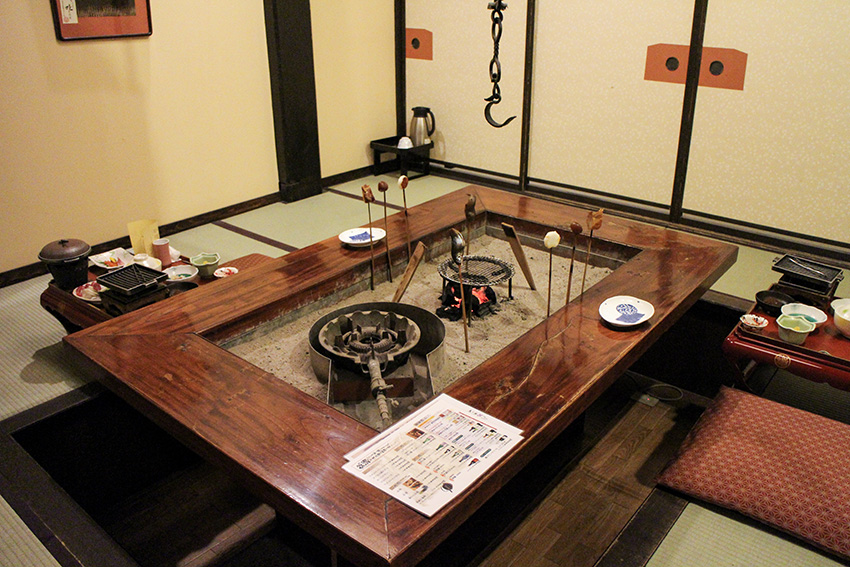
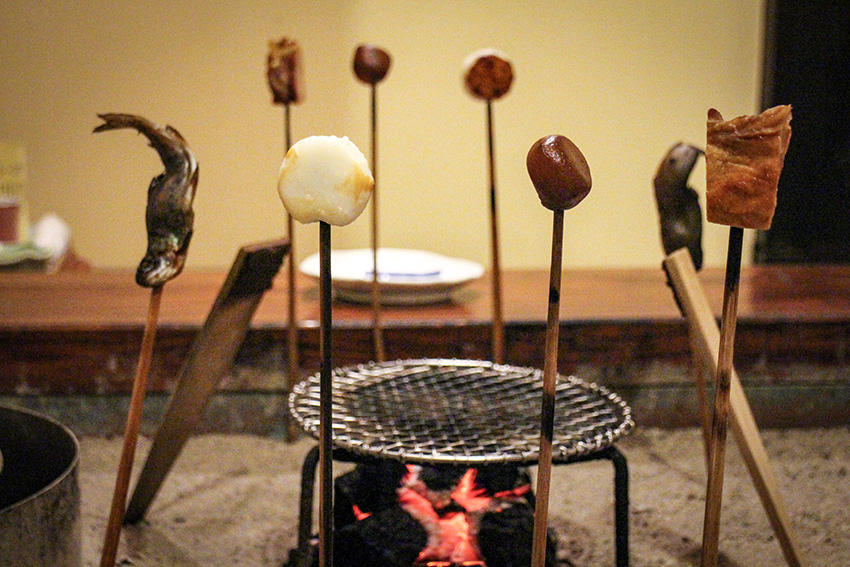
Dinner was maybe the highlight of our trip, as the staff lead us through a maze of hallways into our very own private dining room. After some yukata rustling, we settle in, legs under the irori sandpit and our feet on the warm heated floor. Our time travel machine suddenly jumps further back than Edo period, to the time when Heike clan ruled these lands during the Heian period (794–1185).
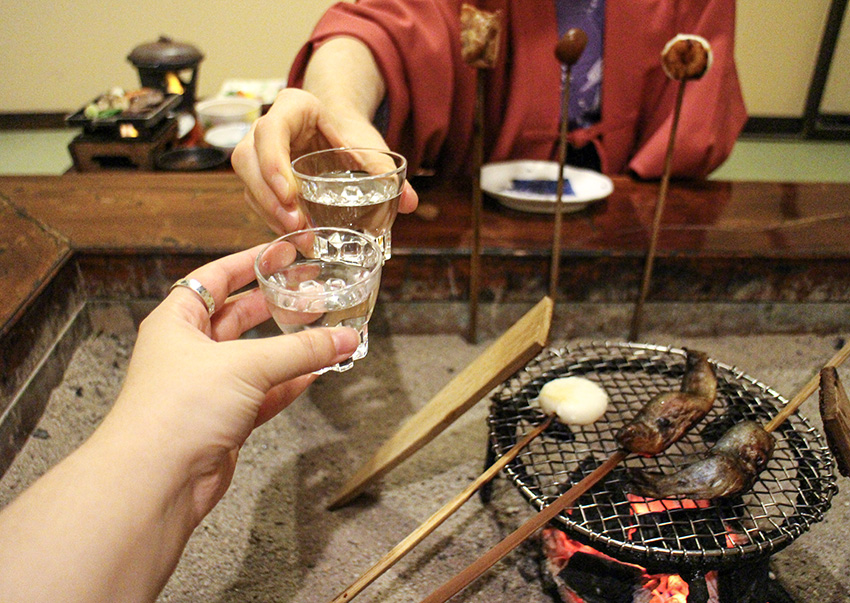
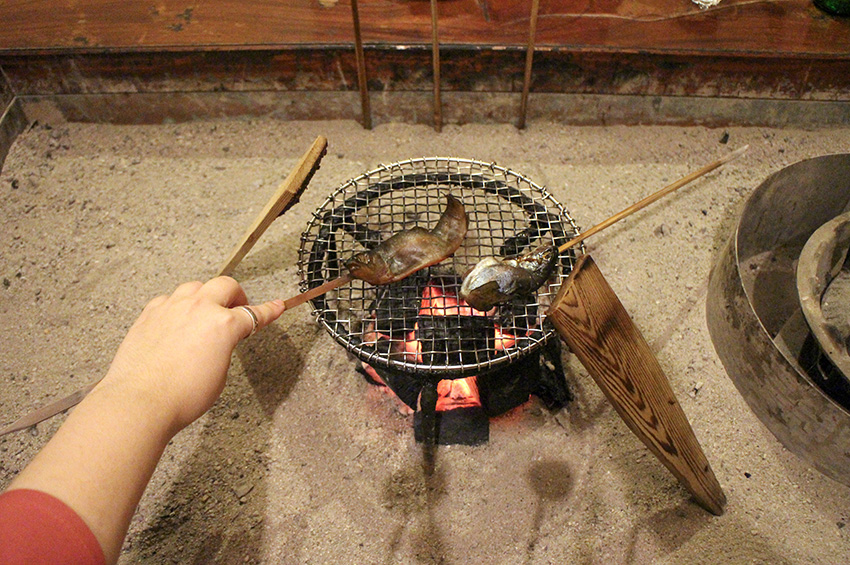
The irori cooking from those times is a rare treat today, but it has the same warmth and the same power to bring people together. We kanpai with a limited-edition sake, and we get grilling! Every bite represents these mountains – river fish, chicken, beef and even deer meat. The mouthwatering miso soup is enhanced with local mushrooms and the wine is made from wild grapes. Dishes keep coming on ornate plates, in this feast that seems to have no end.
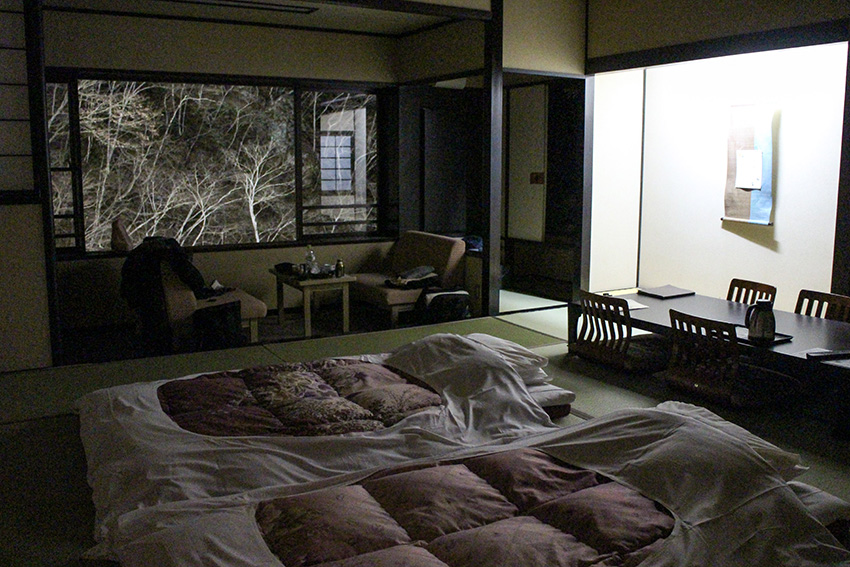
Hana to Hana also has a sake bar that has alcohol from all the local breweries in the area, a spacious lounge, even a karaoke bar with private booths! All of them tempting, but this time, we decided to call it a night and sprawl on the soft futons on the straw tatami floors.
Heike no Sato – Another Timeslip
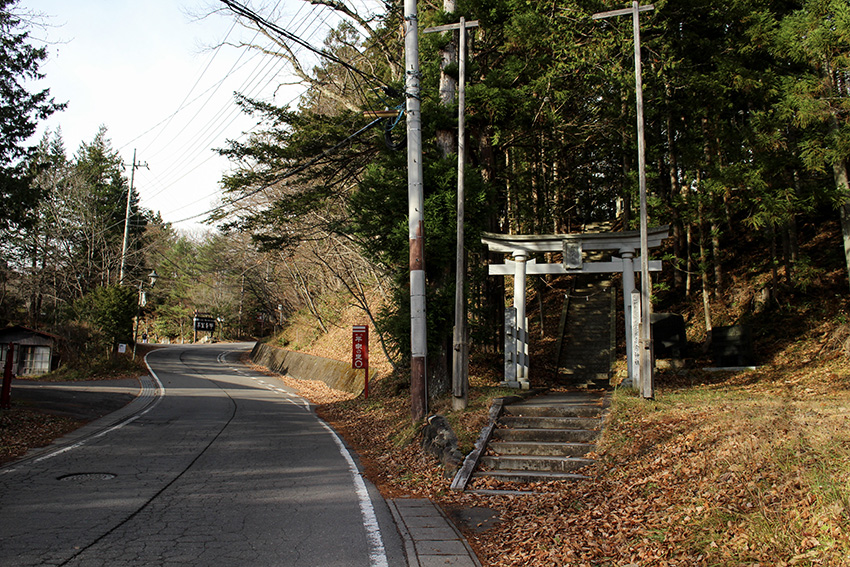
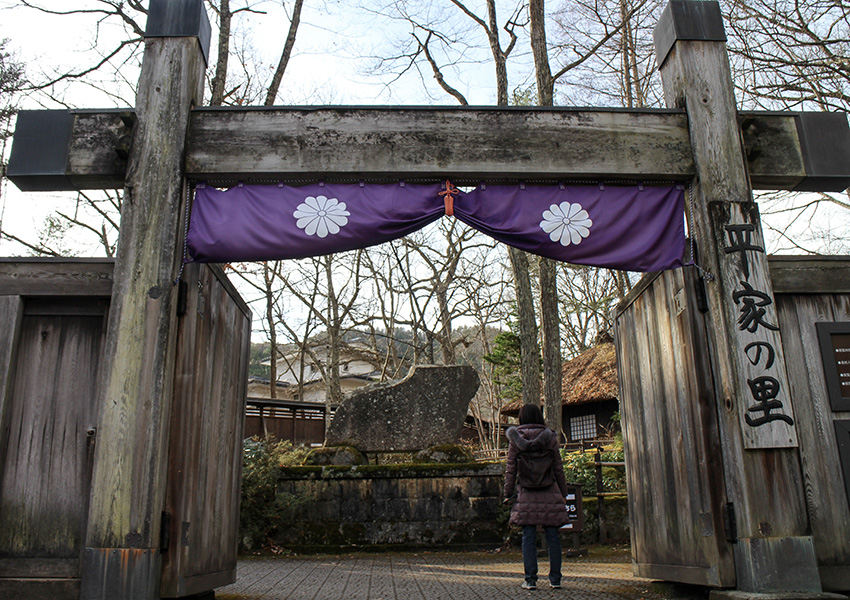
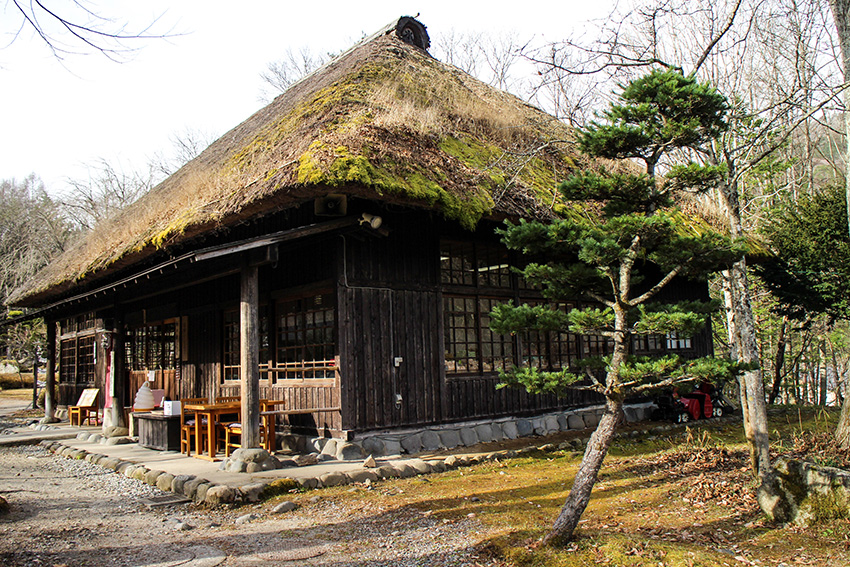
The hotel’s breakfast was as tasty as dinner showed us, and as generous as onsen ryokan breakfasts usually are. It gave us the energy for the day ahead, as we had an early start. We opted for a 20min walk to Heike no Sato Folk Village to fill our lungs with fresh mountain air. We passed sleepy ryokans and local shops, as the locals assured us we are on the right path. And sure enough, we soon saw Heike no Sato and its thatched roofs peeking behind the entrance gates.
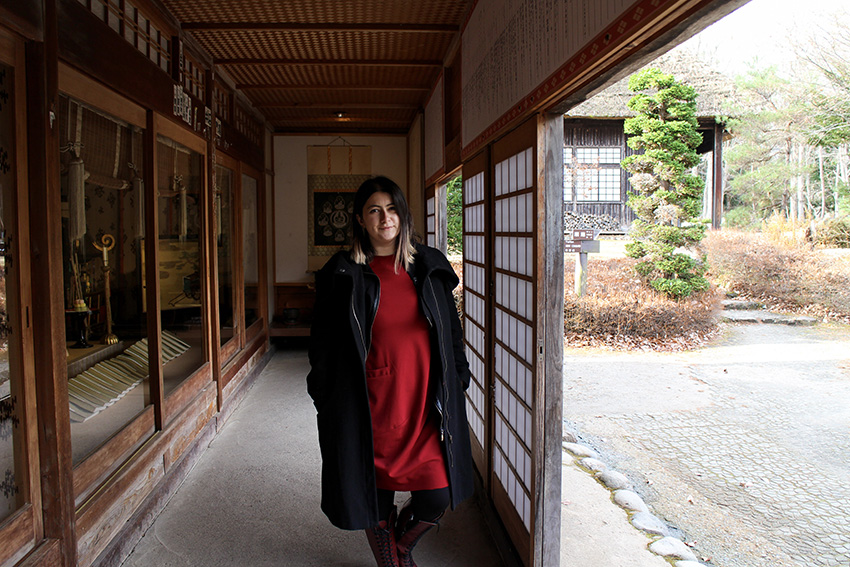
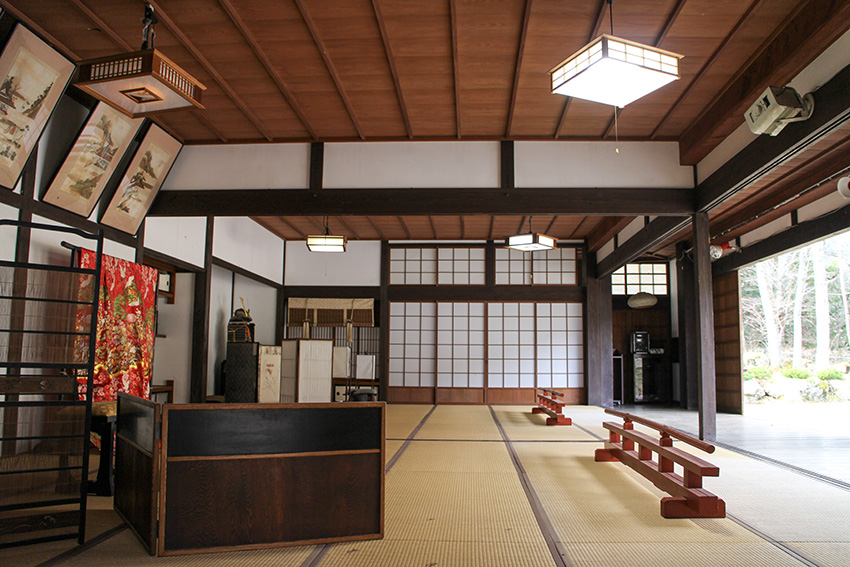
The village is an open-air museum, with its buildings being architectural exhibits themselves, with historical and cultural displays inside. The little huts are hugged by green moss and surrounded by calm nature. It even started to lightly snow! For cold days like this one, one of the huts is a cozy café and restaurant where you can take shelter. However, we hurried to catch the bus going back to Kinugawaonsen, as we had something else in mind.
“Ashiyu” with a Bonus – Foot Spa at Café ESPO
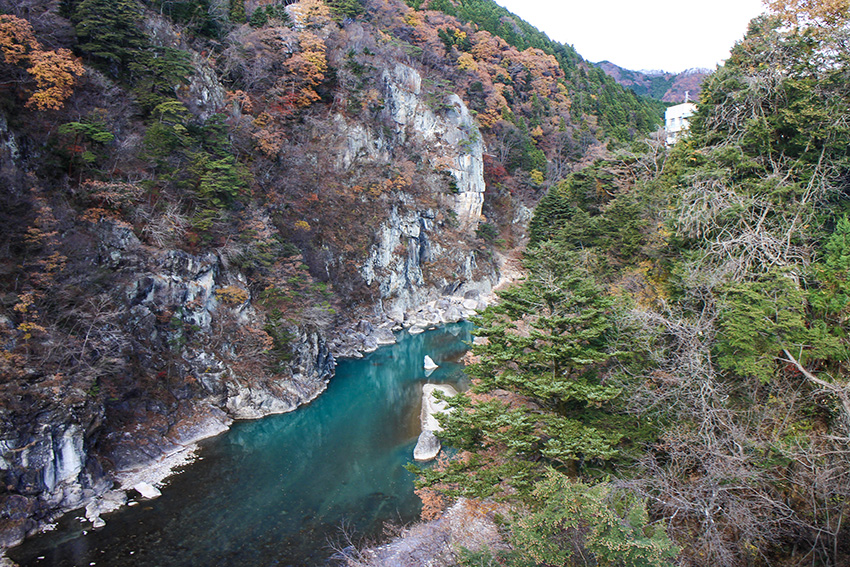
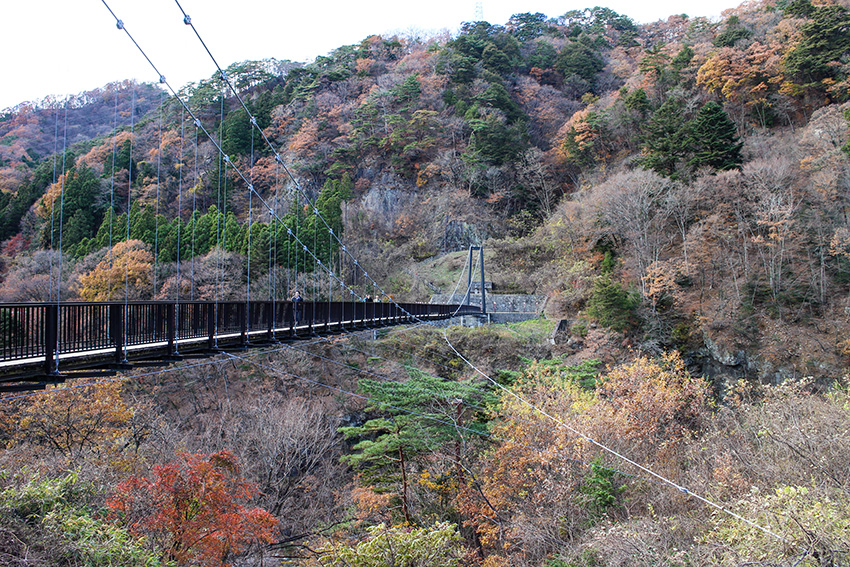
The emerald Kinugawa river under the Kinutateiwa Otsuribashi suspension bridge seems almost unreal. I have the feeling no one will believe me it’s not a filter when I show them photos. Here in Kinugawa onsen there are still some autumn colors complementing the colour of the river. The trembling of the bridge is a little bit scary for us, so we decide to admire the view from a more stable point of view – café ESPO that overlooks Otsuribashi bridge.
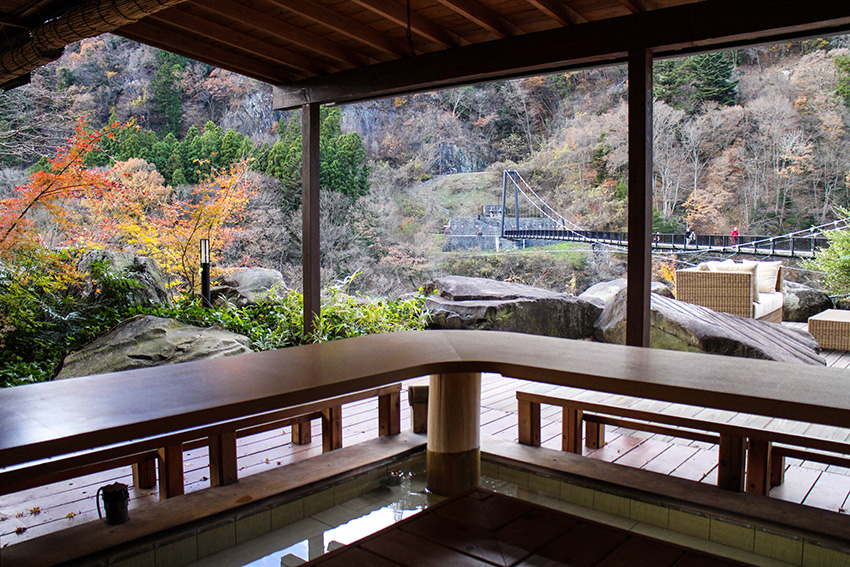
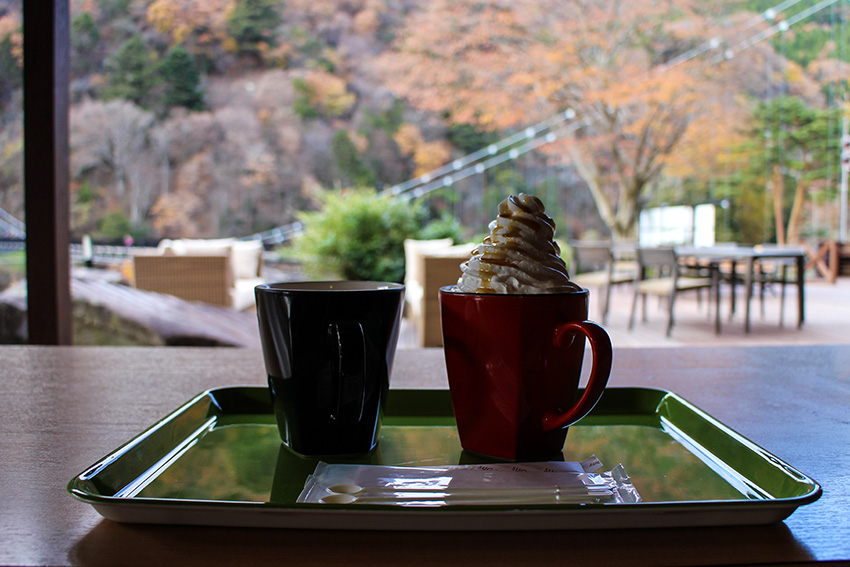
However, this is no ordinary café. Don’t forget we’re in an onsen town! Hot spring water flows freely and there are several free spots called “ashiyu” (足湯, meaning ”foot hot spring”) around Kinugawa onsen. Café ESPO is a blend of both a café and an “ashiyu”, so you can sip on a tasty latte as you soak your feet in the hot springs water, overlooking the bridge. We felt incredibly pampered, with the café providing even towels, and were conspiring how to bring this concept everywhere.
Katayama Shuzo Sake Brewery – A Family Business that Welcomes you like Family
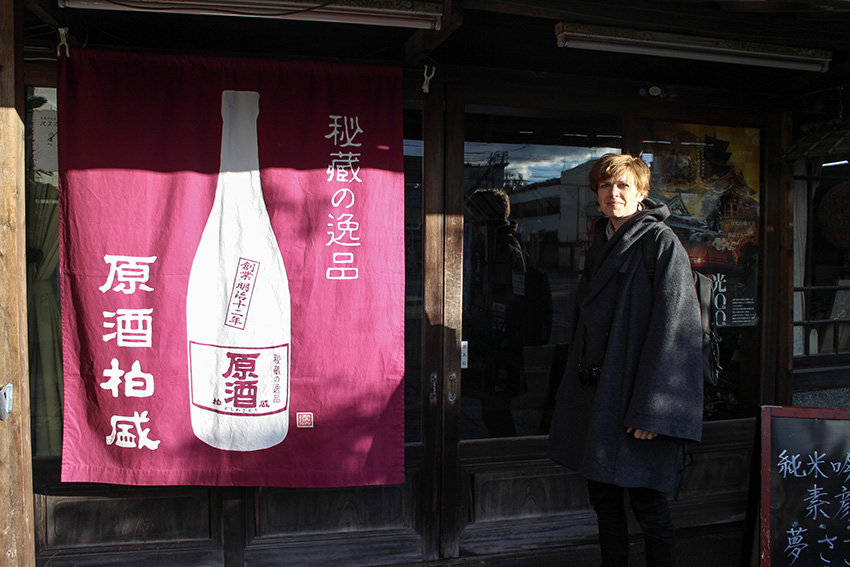
During this trip we had already heard a lot about the local sake and even tasted rare sake in our hotel. Now we wanted to go straight to the source! We had a quick lunch around Kinugawaonsen station, of course with a generous helping of “yuba” – a tasty tofu dish that this region is well known for – and we took the train for a quick ride to Shimoimaichi station. From there, Katayama Shuzo brewery can be reached by either a short 15min walk, or a quick and cheap taxi ride.
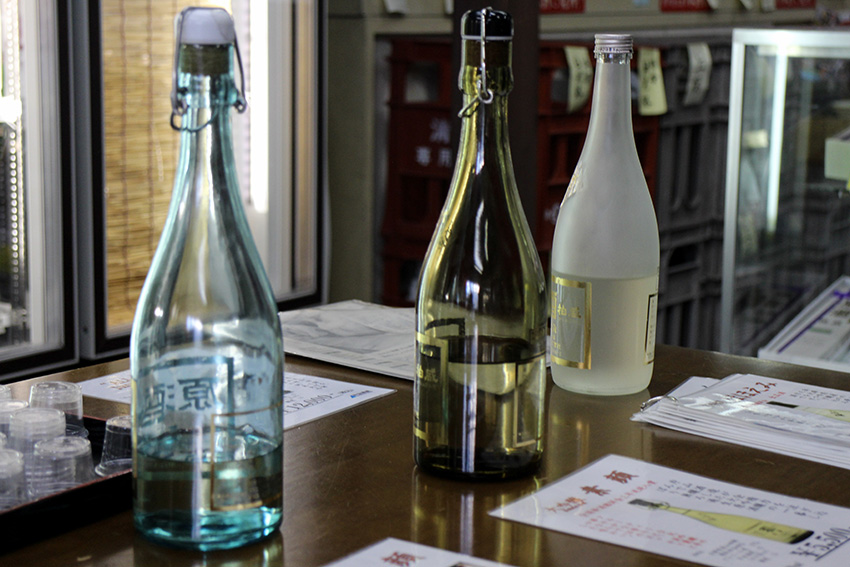
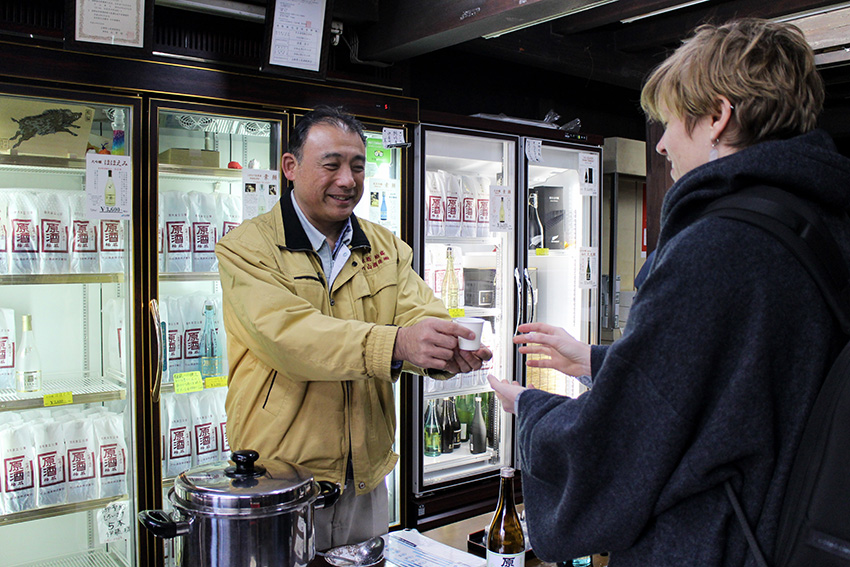
The brewery’s walls are lined with people’s names pre-ordering the sake that’s yet to be made and the fridge displays the custom-made sake for New Zealand’s rugby team, All Blacks. However, Katayama-san is not asking us to only trust the reputation or take his word for it. He invites us to a sake tasting of the brewery’s bestsellers and prize-winners, and some amazake (sweet non-alcoholic rice drink) to see for ourselves. Both the sake samples and his bright personality are enough to send us on our way home with a smile.
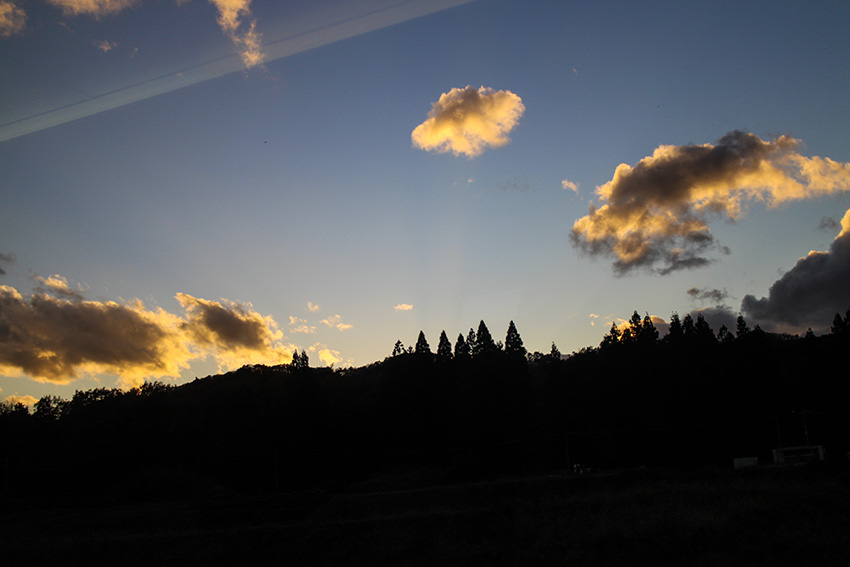
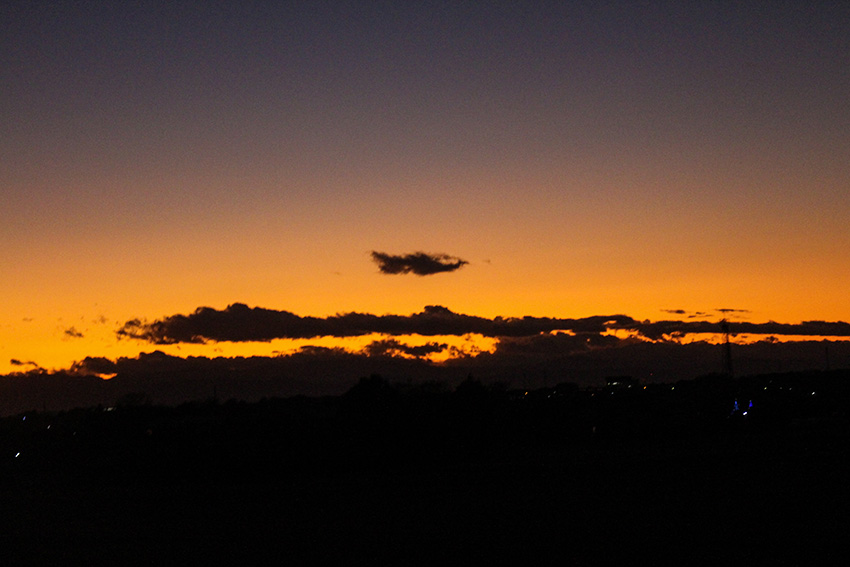
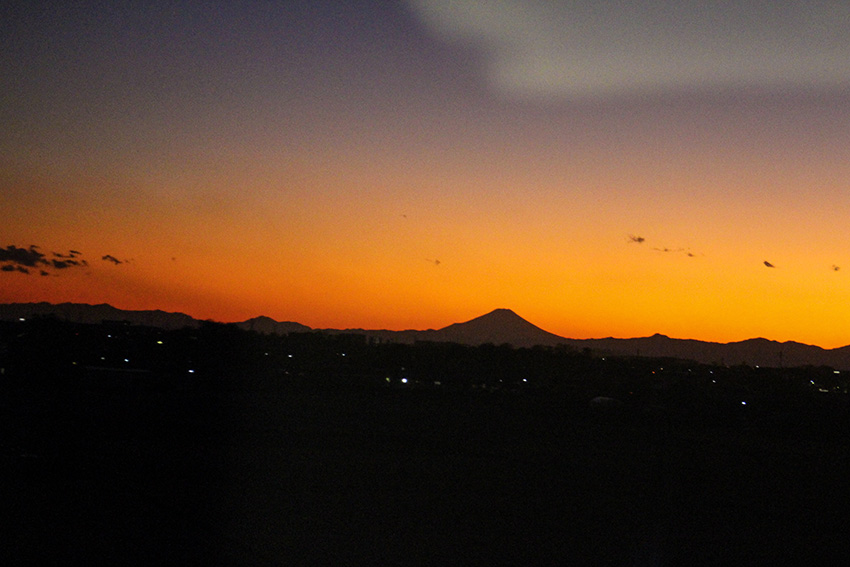
Just as we were going to the train station to get back to Tokyo, cold chilling winds started blowing around Shimoimaichi station. Perfect time to hide in the warm train. And although we thought the fun trip was over, there were more surprises in store. First, a man-made surprise – the SL TAIJU Steam Locomotive train passed us puffing smoke and reminding us of times past. And second, the most beautiful sunset painted burning skies, accompanying us all the way to Asakusa. A spectacle that is truly timeless.
- Access to Nikko/Kinugawa
- http://www.tobujapantrip.com/en/area/nikko_kinugawa/access.html
- NIKKO PASS
- http://www.tobujapantrip.com/en/ticket/nikko/
Pass holders get discounts. One example is a 10% discount on the Edo Wonderland entrance tickets - Tobu bus routes
- http://www.tobu-bus.com/en/nikko/
- Edo Wonderland
- http://edowonderland.net/en/
- Yunishigawa onsen
- https://travel.tochigiji.or.jp/en/things-to-do/68/
- Hana to Hana hotel
- https://www.yunishigawa.co.jp/en/
- Heike no Sato
- http://www.heikenosato.com/
- Café ESPO
- http://www.sunshine-kinugawa.co.jp/facilities/index.html#cafe
- Katayama Shuzo Sake Brewery
- http://www.kashiwazakari.com/process/english.html

